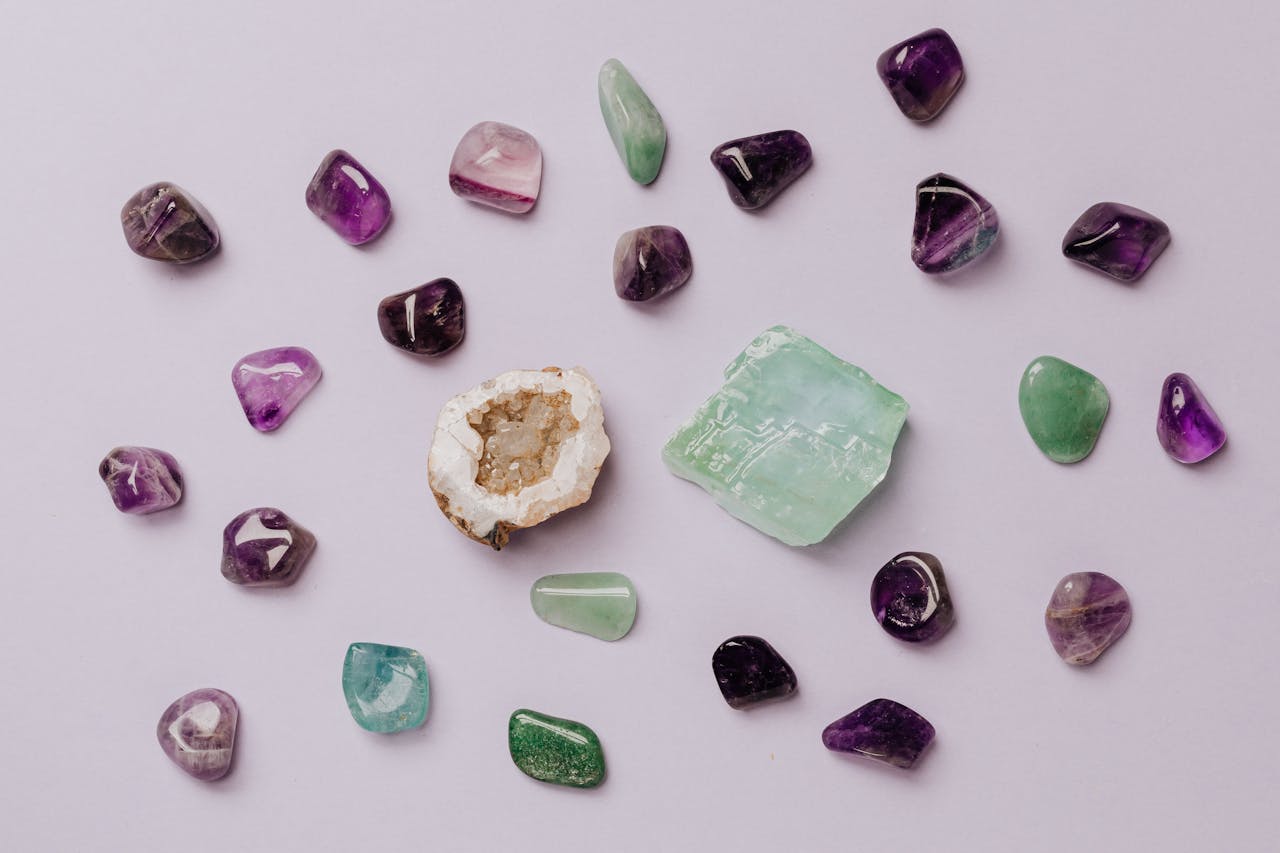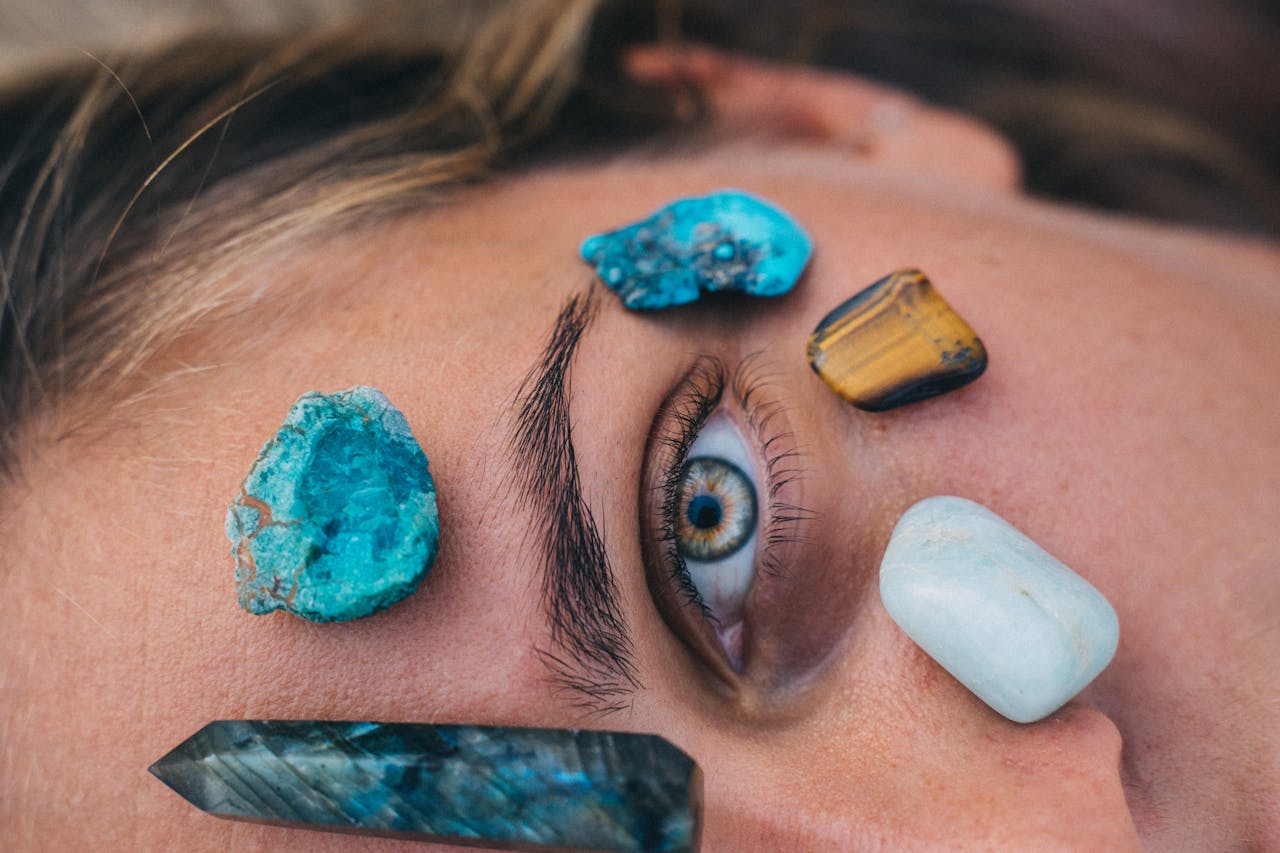1. What Makes a Gemstone Rare? Defining Rarity and Exotic Appeal
True rarity in gemstones stems from geological scarcity, unique formation conditions, or limited geographic sources. In 2025, collectors and jewelry connoisseurs increasingly seek unconventional treasures beyond diamonds and rubies, driven by demand for one-of-a-kind pieces. Key factors contributing to rarity include:
- Geological Scarcity: Minerals formed under hyper-specific pressure/temperature conditions.
- Single-Sourced Origins: Stones found only in one region (e.g., tanzanite’s Tanzania exclusivity).
- Pricing Dynamics: Auction records for stones like **padparadscha sapphires** (\$50,000+/carat) reflect scarcity.
2. Obscure Treasures: Gemstones You’ve Never Heard Of (But Should)
2.1 Padparadscha Sapphire – The Coral-Colored Miracle
A hybrid of pink and orange corundum, padparadscha sapphires derive their name from the Sinhalese word for “lotus blossom.” Found primarily in Sri Lanka and Madagascar, these stones owe their hue to trace elements of chromium and iron. With a Mohs hardness of 9 and refractive index rivaling rubies, they’re both durable and dazzling. Their extreme rarity—a 2023 report noted fewer than 1,000 gem-quality specimens discovered annually—makes them favored by high-end auction houses like Christie’s.
2.2 Benitoite – California’s Hidden Diamond
Declared California’s state gem in 1985, benitoite glows under UV light and refracts light more intensely than diamonds (RI 1.76). A barium titanium silicate, it forms in tiny hexagonal crystals found almost exclusively in San Benito County. Despite its 6–6.5 hardness (similar to apatite), lapidaries craft custom bezel settings to protect it. Synthetic versions exist but lack the natural stone’s blue fluorescence and hexagonal symmetry.
2.3 Grandidierite – The Sky-Hued Enigma
First discovered in Madagascar in 1902, grandidierite ranks among Earth’s most elusive gems. A magnesium-aluminum borosilicate, it exhibits a celestial blue-green color due to iron content. With less than 50 faceted examples globally, its 7.5 hardness and perfect cleavage demand careful handling. Transparent specimens command six-figure prices at auctions, though most available on the market are cabochons or rough specimens.
2.4 Jeremejevite – The Collector’s Secret
A rare aluminum borate mineral, jeremejevite is found in only two locations: Namibia and Russia. Colorless to pale blue variants rival aquamarine in clarity but require magnification to spot their hexagonal crystal structure. With a 7.5–8 hardness, it’s suitable for pendants and earrings but not daily wear. Its scarcity—fewer than 100 gem-quality cut stones exist—makes it a prized asset for investors.
3. Forgotten Classics and Modern Rediscoveries
3.1 Taaffeite – Mistaken Identity Turns Legendary
Discovered in 1945 by Irish-Austrian gemologist Edward Taaffe, this stone was initially misidentified as spinel. A 2024 study revealed its complex crystal system and dual refraction, distinguishing it from similar gems. Found in Burma and Tanzania, taaffeite exhibits a range of colors from lavender to deep red. Its 8–8.5 hardness and scarcity (less than 50 verified gemstones) make it a collector’s dream—and a frequent subject of imitation.
3.2 Painite – From Rarest to Rising Star
Once listed in the Guinness Book of World Records as Earth’s rarest mineral, painite’s status shifted after Myanmar discoveries in the 2010s. A zirconium-boron oxide with a Mohs hardness of 8, it displays vivid orange-red hues and strong pleochroism (shifting colors at different angles). While hundreds of cut specimens now exist, top-quality 2+ carat stones still fetch \$15,000–\$60,000 per carat.
3.3 Red Beryl – Utah’s Volcanic Wonder
Formed in rhyolitic lava flows, red beryl (formerly “bixbite”) owes its fiery crimson color to manganese. Limited to the Wah Wah Mountains of Utah, crystals grow in hollow amethyst geodes—a process taking over 20 million years. With a 7–7.5 hardness, it’s best suited for brooches or earrings. Only 10,000–15,000 gems exist globally; faceters reject 90% of raw material due to excessive inclusions.
4. Buying and Caring for Rare Gemstones: Expert Tips
4.1 How to Verify Authenticity and Value
Rare gems attract counterfeits; follow these steps:
- Spectroscopy Testing: Identifies trace elements (e.g., chromium in padparadschas).
- UV Fluorescence Checks: Benitoite’s blue glow distinguishes it from similar tourmalines.
- Certification: Insist on GIA or SSEF reports for stones over \$10,000.
4.2 Maintenance and Storage Solutions
Handle fragile specimens with care:
- Benitoite: Store separately from harder gems to prevent abrasion; clean with a microfiber cloth.
- Grandidierite: Avoid ultrasonic cleaners; use lukewarm water and mild detergent.
- Red Beryl: Keep in a padded case away from vibrations—its cleavage planes make it prone to chipping.



I had no idea tanzanite is a thousand times rarer than diamond—what other stunning gems are hiding in plain sight that most jewelers don’t even carry?
I never realized how many stunning gemstones exist beyond the usual diamonds and rubies—do you have a favorite underrated gem that deserves more attention?